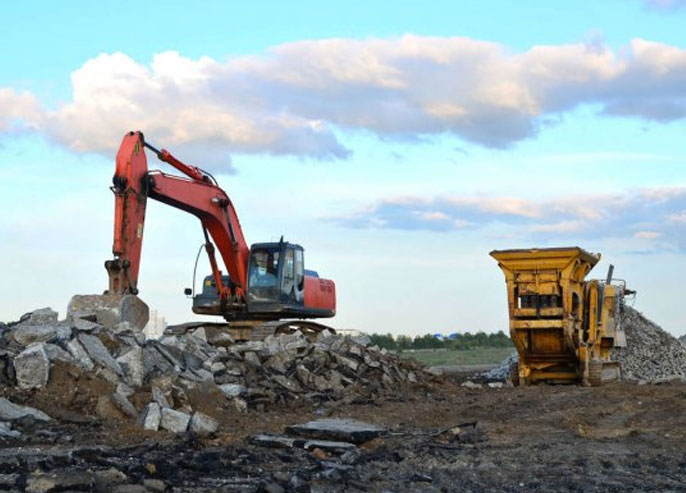Western Australia’s mining industry reached new levels of productivity in 2021. Sales soared to $186 billion, close to 150,000 people found work in mining and mineral exploration, and investment reached a five-year high, topping $21 billion.
So with new operations coming online and existing projects expanding, it might seem strange that CD Dodd is focusing on mine site demolition.
But just like any business, mine sites go through a natural life-cycle. At some point, a mine needs to be safely and efficiently demolished, in whole or in part, leaving the area clear for rehabilitation and minimising the mine site’s environmental impact.
That’s where scrap metal recyclers play a vital role.
The 5 stages of a mining project
Every mining project is unique. However, almost all follow the same 5 stages – some over a few years, others several decades.
- Exploration and planning
Geologists today use advanced technology and techniques to find resource-rich tenements. By surveying a site from the air, testing the soil, and drilling deep into the ground, they can estimate the deposit’s size, shape, and quality.
Planning kicks into high gear once a company finds an economically attractive deposit. Designing a mining project can take years. The operator needs to consider environmental factors, start-up costs, socio-economic impact, environmental disturbance and long-term financial viability.
- Building and commissioning
Mining projects are complex. Turning raw earth into a saleable product requires an interconnected series of mini-projects that collect, screen, process, refine and transport a whole lot of material.
Building a mine site can take even longer than planning, depending on the location, scale, complexity, and environment. But when the first ore hits the conveyors, a mining operator can see their hard work starting to pay off.
- Operation
Mine sites can – and do – remain operational for decades. Over time, machinery breaks down and is replaced, technology advances and processes evolve.
What happens with all that unusable infrastructure? Scrap metal recycling for mine sites is different from recycling in urban areas. The job requires a specialist scrap metal recycler capable of travelling to remote locations, working around ongoing operations to extract and recycle scrap metal safely.
- Decommissioning and mine site demolition
By the time a deposit eventually runs dry, planning for the mine site demolition has been underway for years. Just like building, decommissioning a mining operation is a complex and lengthy process, guided by strict environmental, social and legal requirements.
Demolishing a mine site properly means:
- Methodically deconstructing equipment
- Thoroughly clearing the site
- Stabilising large structures
- Recycling as much metal as possible
- Complying with safety and sanitation regulations
- Ensuring the field is clear for site rehabilitation.
It’s not enough to simply tear down the dormant operation. Mine site demolition requires a highly professional scrap metal recycler like CD Dodd.
- Reclamation and rehabilitation
Even the longest-running mine is still temporary. Rehabilitating a decommissioned mine site starts back in the planning phase with detailed environmental plans and site restoration strategies:
- Environmental assessments
- Ecological surveys
- Water quality testing
- Waste removal strategies
- Revegetation
- Waste material recycling
- Environmental impact modelling
Long after the last scrap metal is taken away, mining companies continue working to rehabilitate the ground.
Professional and thorough mine site decommissioning
Right from the get-go, mining operators are thinking ahead – and so are we. Mine site demolition is a cornerstone of Western Australia’s mining industry. Here at CD Dodd, we offer tailored scrap metal recycling services to mining companies all around the state.
Find out more about our extensive decommissioning and demolishing services here, or contact us to discuss your scrap metal recycling requirements.
